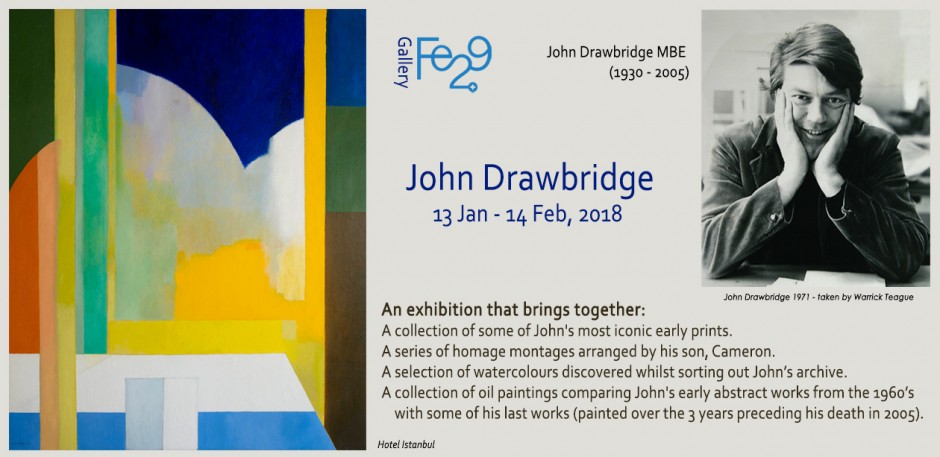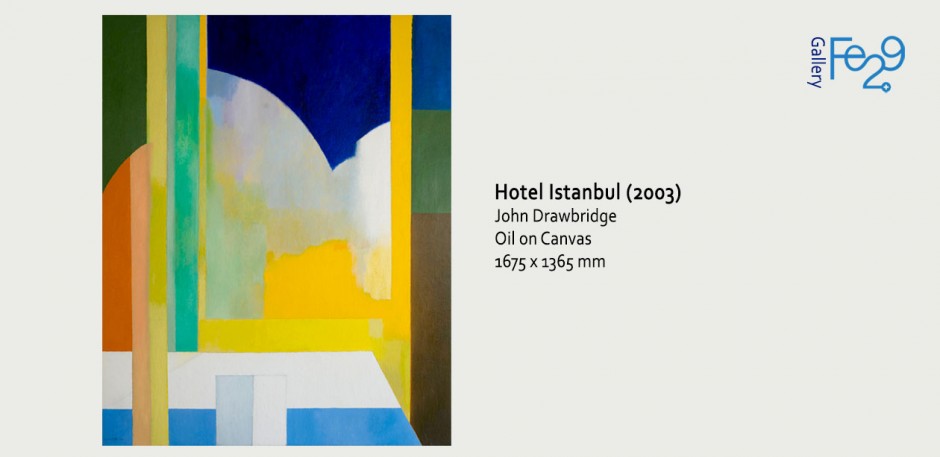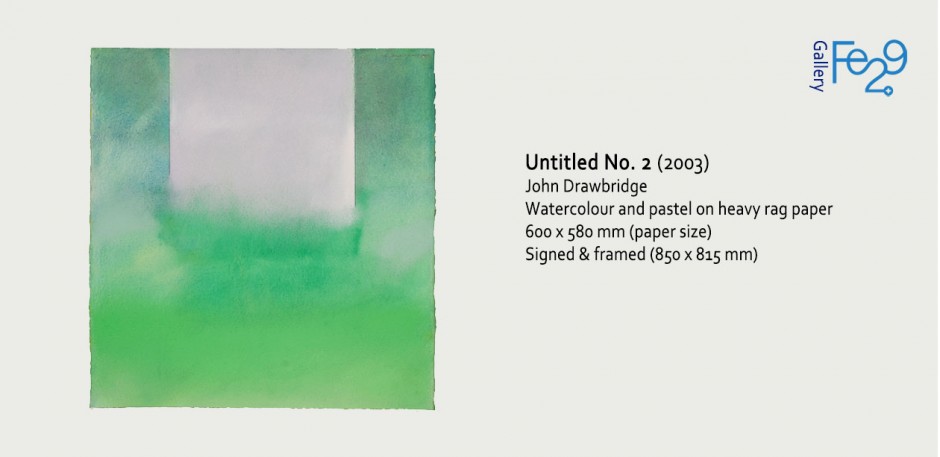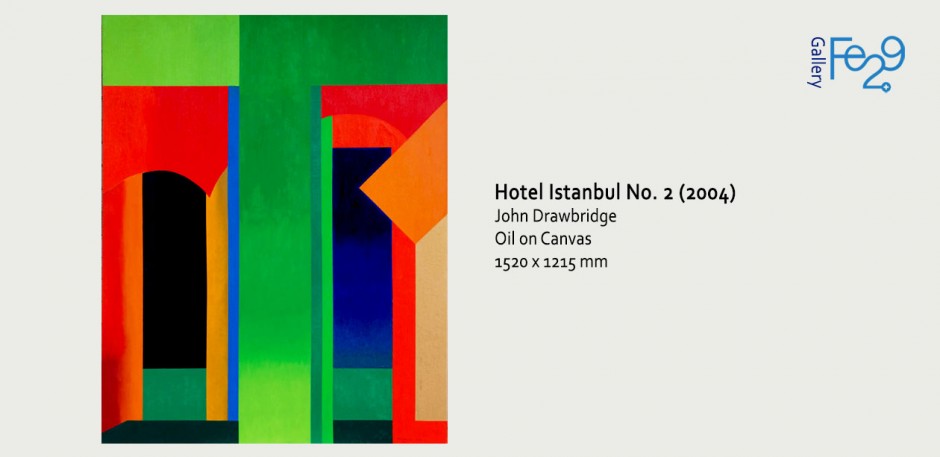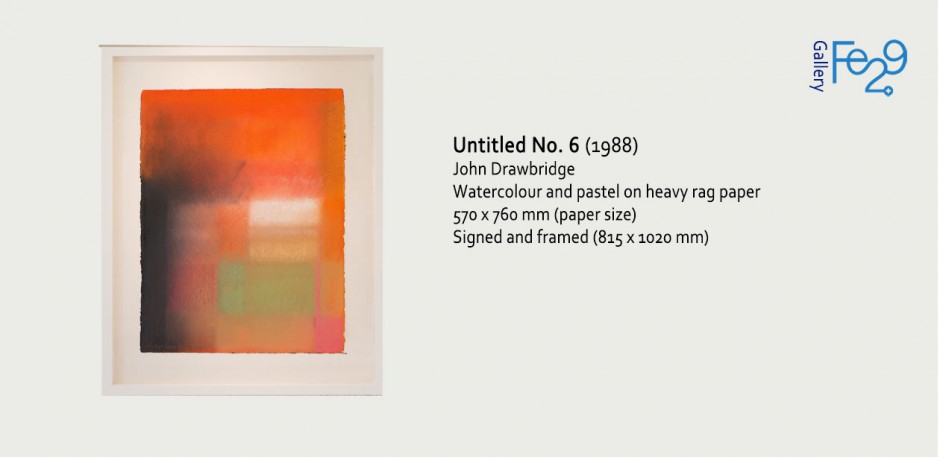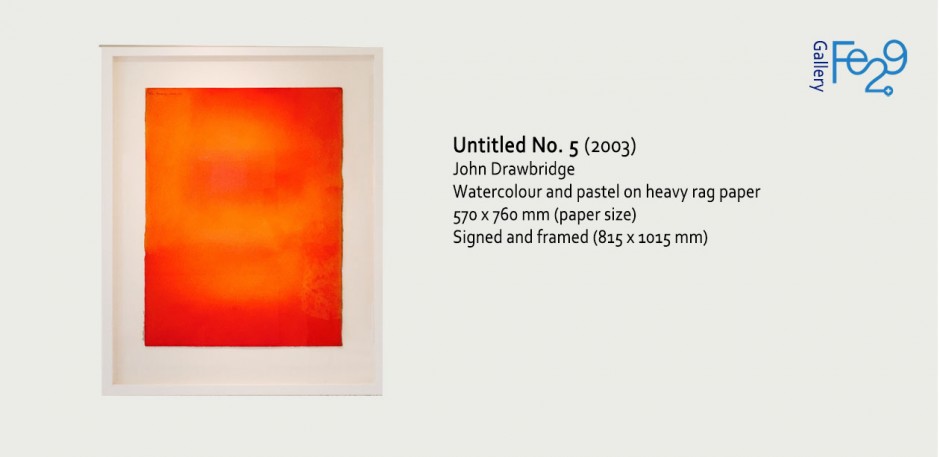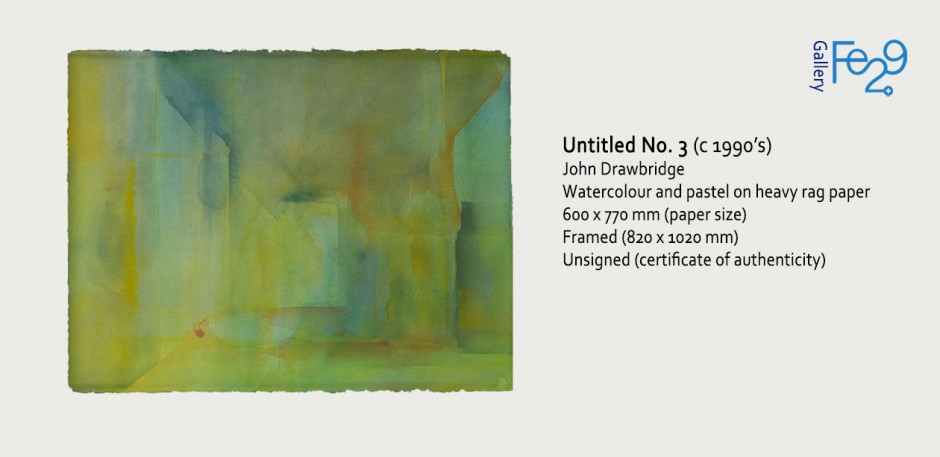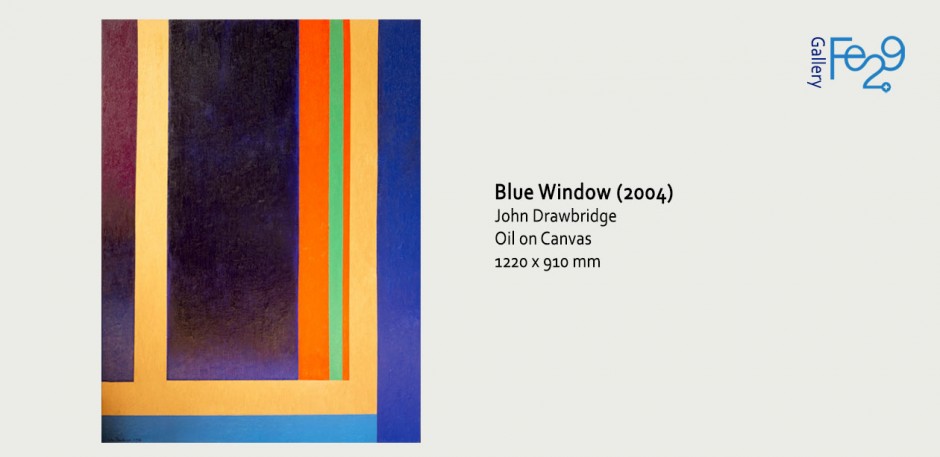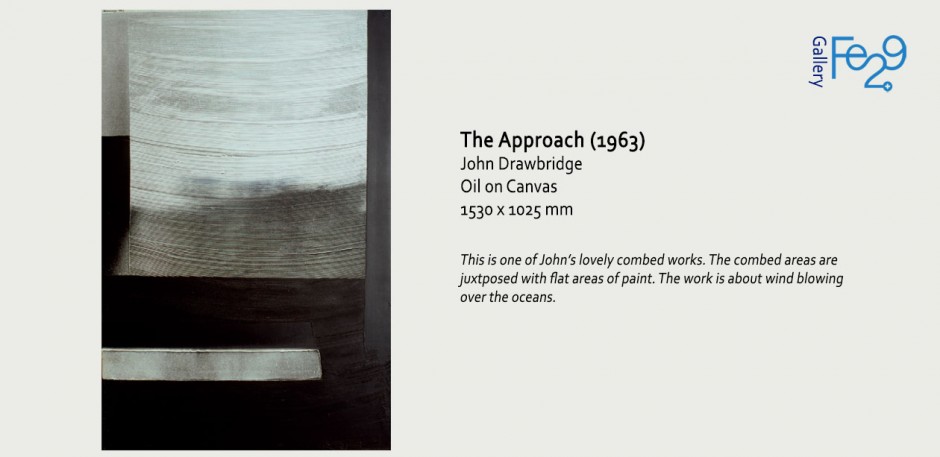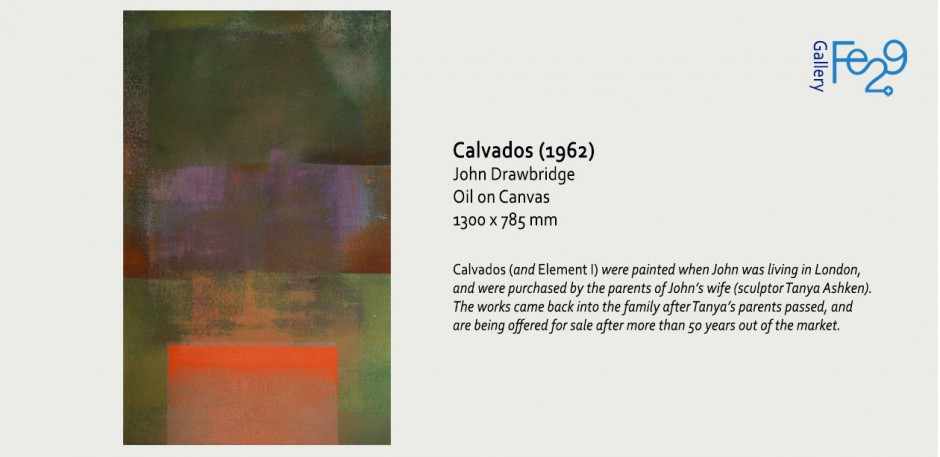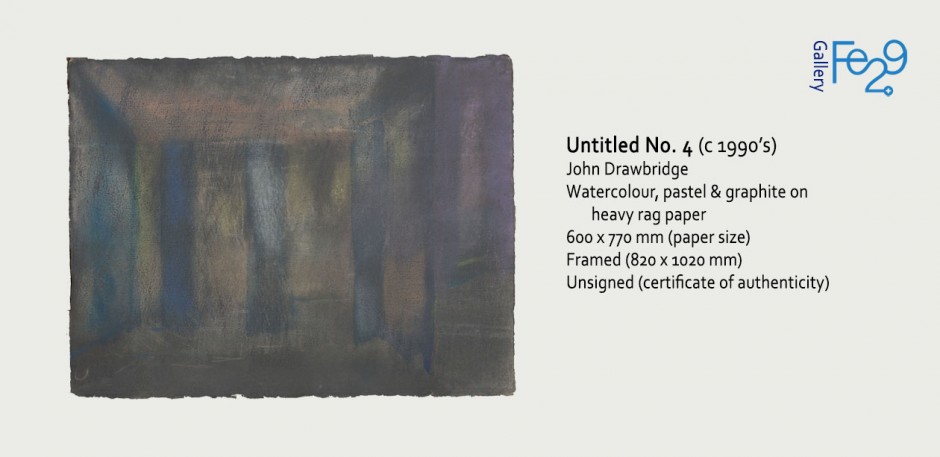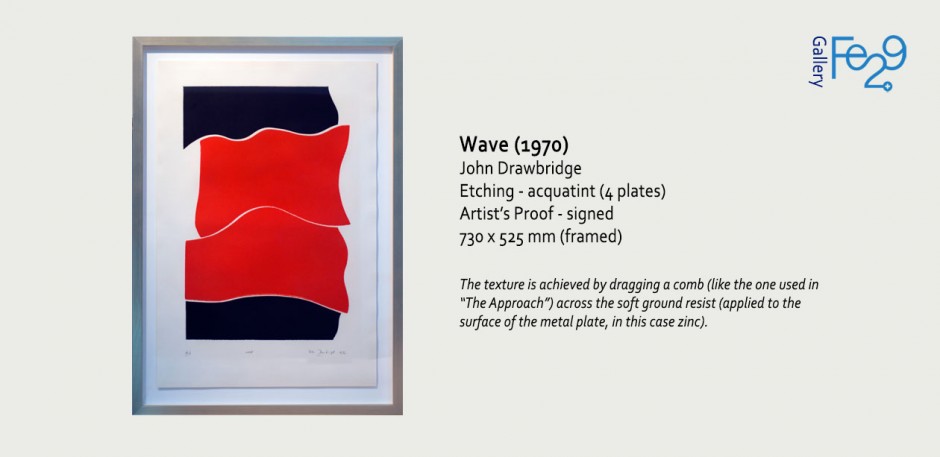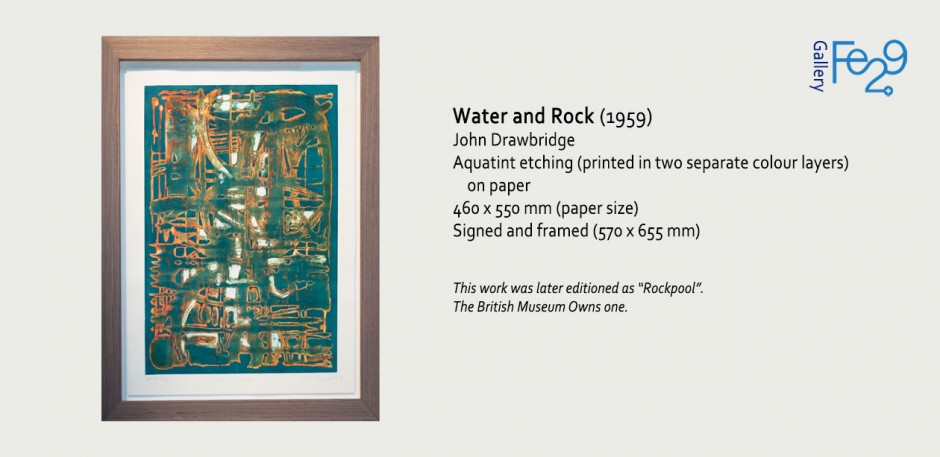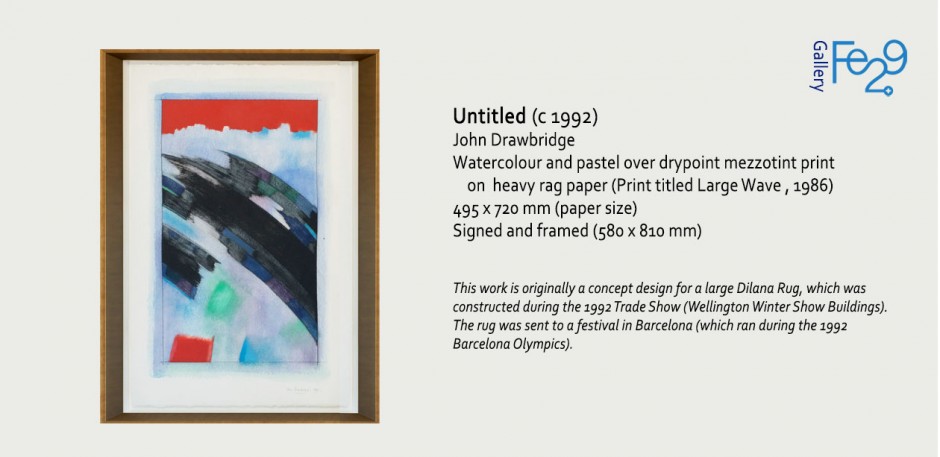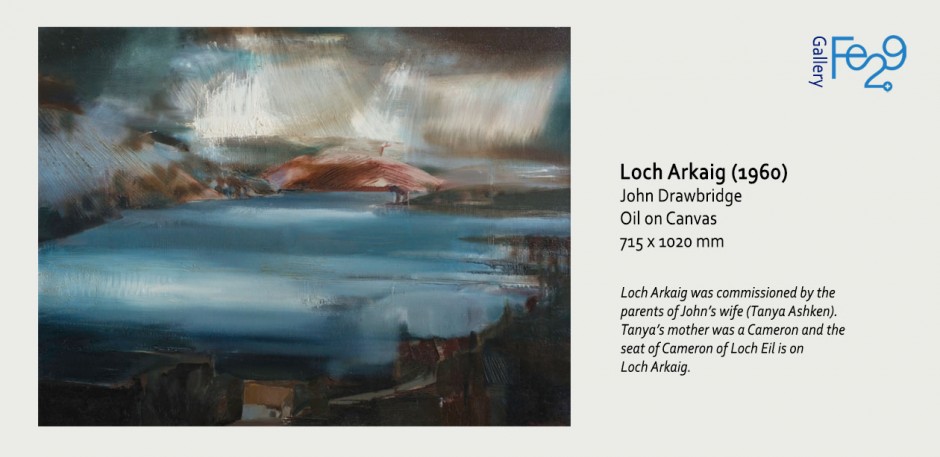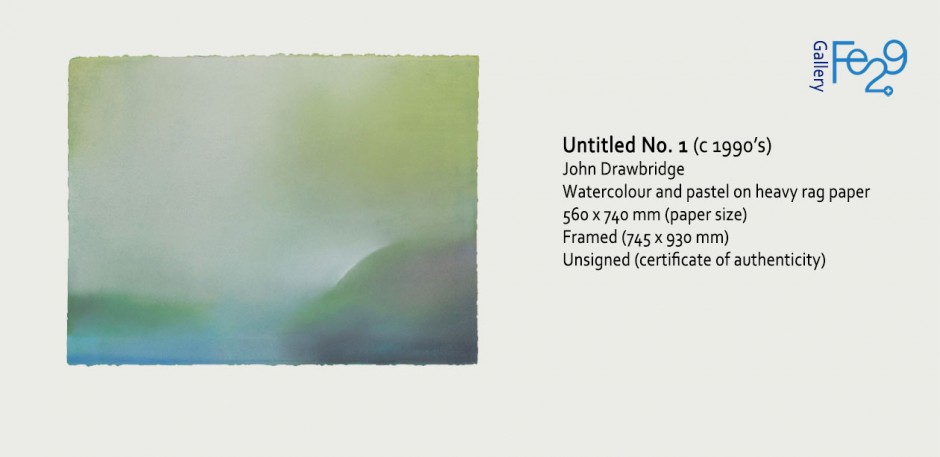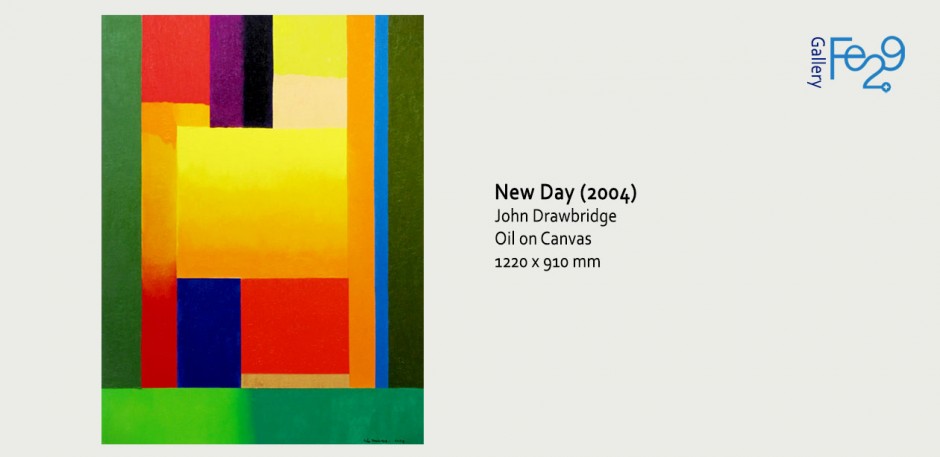Working in a variety of media, notably intaglio prints, oils, watercolours and large murals, over a 60-year career, John Drawbridge developed an abstract art which ncapsulated elements of New Zealand land- and seascape. His work attracted international recognition, while informing the reception of Modernism in New Zealand, and of New Zealand art overseas.
His approach to life was inquisitive and exploratory in nature and his art was no different. Through one path of investigation he wished to challenge one’s levels of perception taking part in movements like Op Art, Pop Art and Abstract Expressionism, while simultaneously delving into art history, either to pay homage to, or to glean information from, masters like Rembrandt and Piero Della Francesca or from more recent ground breakers like Malevich or Matisse.
At a time when printmaking as a skill was at a low ebb, Drawbridge was introduced to mezzotint by Merlyn Evans and developed his skills in Paris with Stanley William Hayter and Johnny Friedlander, where he frequented Lacourière’s workshop watching the printing of Picasso, Braque and Chagall.
Drawbridge created some of this county’s most spectacular public art works, notably the 42 x 4.8 m Beehive mural (Banquet Hall, Parliament), the 9 x 4 m Expo ’70 mural for the NZ Pavilion in Osaka, Japan (now held by Auckland University), the 20m long mural painted for NZ House in London (now hanging in the Victoria University campus) and the stained glass windows and Stations of the Cross in the Home of Compassion, Wellington.
He was awarded an MBE in 1978, an Honorary Doctorate of Literature from Massey University in 2002, and was posthumously inducted into the Massey University Hall of fame in 2009. Drawbridge started as a textile designer, moved to prints, then oils, watercolours and multimedia, but all were informed by his characteristic feeling for light and texture.
This exhibition brings together a collection of some of John Drawbridge’s most iconic early prints; a series of homage montages arranged by John’s son, Cameron; and a selection of watercolours discovered whilst sorting out his archive. The oil paintings on show compare John’s early abstract works from the 1960s with some of his last works (painted over the 3 years preceding his death, in 2005).


